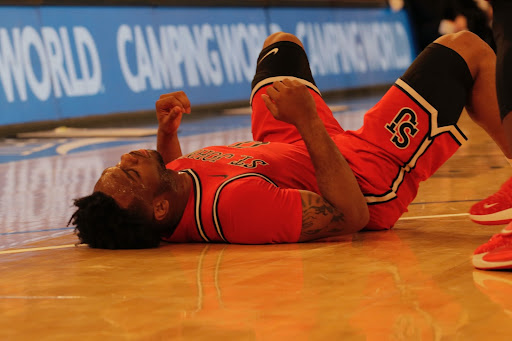It appears that St. John’s can bleed green as much as it can bleed red. Coming in 4th place in the 2010 Campus Conservation Nationals, the University has proven that it is seriously committed to reducing its footprint on the environment.
What’s more impressive is that St. John’s beat out other major metropolitan area schools like New York University and Columbia, making a statement in the tri-state region. Some buildings on campus reduced their energy usage by over 25 percent, while the campus reduced its total energy usage by 12.2 percent, saving the University a total of $50,200.
We applaud the efforts of everyone who made this fantastic accomplishment possible, especially senior Erin Chalmers who has worked tirelessly over the past few years to make St. John’s a greener place. This is a reassuring sign of all that dedication and hard work paying off.
It signifies a movement and dedication from the student body, especially the resident students who pledged to adopt new energy-saving practices. We also acknowledge the heads at the University for their vital role in this effort.
Truly, things have begun to change at St. John’s. But the changes cannot stop here. Just because we’ve reduced our footprint, doesn’t mean we can stop treading lightly.
While this competition displayed the school’s endeavors to save energy, this is only one aspect of going green. Just like the University took a stand for saving energy in campus buildings, we would also like to see a stronger effort to increase the visibility of the recycling initiative on campus.
The Conservation Nationals proved that student interest at St. John’s is there, and our student body is clearly willing to make the effort. While the school has introduced a seemingly large scale recycling effort—placing bins in classrooms, offices and cafeterias—it isn’t as transparent to students as it could be.
Making this initiative clearer to students by producing monthly updates and detailed information about the effects of their recycling efforts may be the proverbial shot in the arm that students need to take the next step.
We feel that an effort to eliminate bottled water from campus would prove to be huge in the overall effort to help the environment. Bottled water represents one of the biggest challenges facing the broader recycling effort, and education on campus could make a very important difference.
By getting rid of bottled water, the campus’ waste could be reduced enormously. While it may seem like a small change, it would be a giant step forward for the St. John’s environmental initiative.
All of the suggestions or ideas that we put forward probably seem somewhat insignificant, but they are part of a much larger picture. St. John’s has taken the first step, and now they need to continue following the path laid out before them. All of the small changes made by the University add up to one larger effort, an effort that culminates in successes like the one at the Conservation Nationals.
This is just the tip of the iceberg for St. John’s. The University needs to come hard again next year and jump over the bar it set for itself this year. The fruits of this labor can only be more green.







